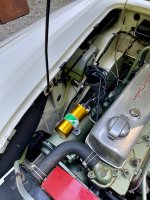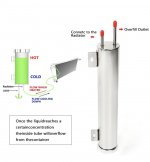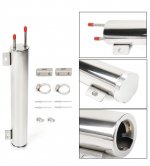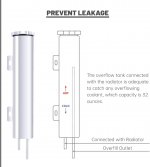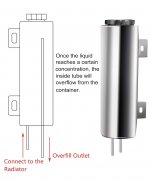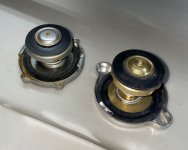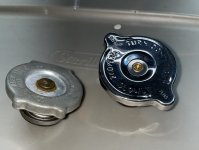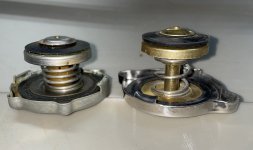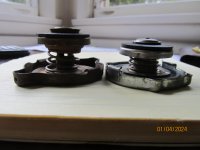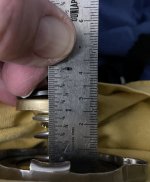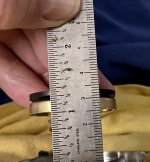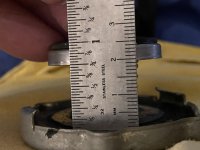So, both should work as coolant recovery type caps but in your picture # 0233 it looks like the stainless steel one is for a deeper filler neck than the other one - just make sure you use a cap made for the depth of your radiator. Mine is a custom made radiator and they used a 3/4" deep neck but a stock Healey radiator I have in my shop has a 1" deep neck (which I think may be standard for all Healey radiators). This picture is the stock 1" deep cap on the left and my 3/4" deep cap on the right - both 7 lb caps.
So, it looks like you show a 3/4" on the left and a 1" on the right in your picture. Measure your radiator from the top flange to the inner lower flange the cap seals against - cap distance will be about 1/16" to 1/8" greater when relaxed than the depth so the spring is slightly compressed when the cap is tight.

 Hi Guest!
Hi Guest!

 smilie in place of the real @
smilie in place of the real @
 Pretty Please - add it to our Events forum(s) and add to the calendar! >>
Pretty Please - add it to our Events forum(s) and add to the calendar! >> 


